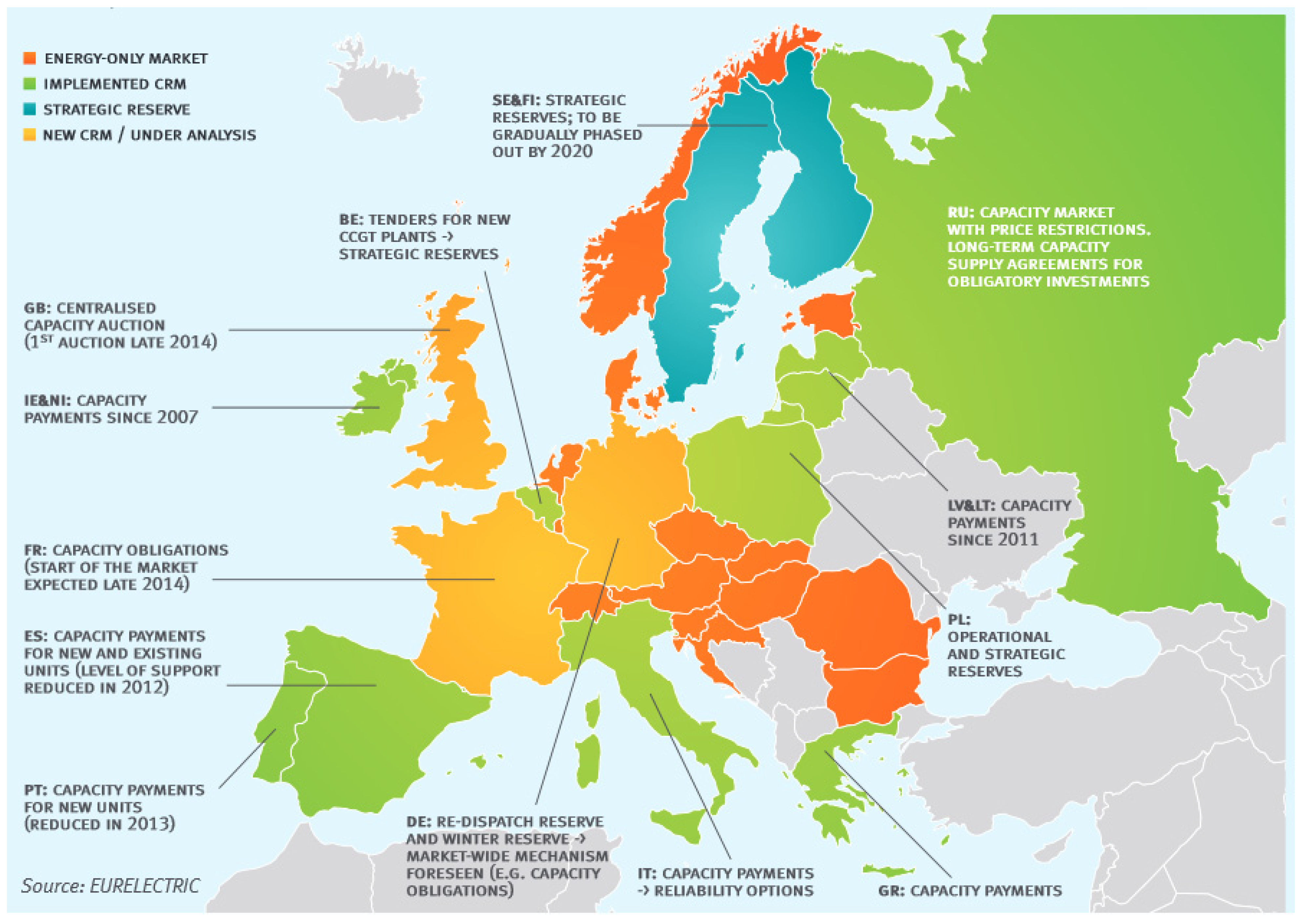European Energy Market: Solar Power's Impact On Electricity Prices

Table of Contents
The Decreasing Cost of Solar Energy
The plummeting cost of solar energy is a primary driver of its expanding role in the European energy market. This decline is a result of both technological advancements and supportive government policies.
Technological Advancements and Economies of Scale
Over the past decade, the cost of solar PV technology has fallen dramatically. This is largely due to:
- Reduced manufacturing costs: Mass production and improved manufacturing processes have significantly lowered the cost of producing solar panels.
- Increased efficiency of solar panels: Technological innovations have led to solar panels with higher energy conversion efficiency, meaning more electricity generated per unit area.
- Improved energy storage solutions (batteries): Advances in battery technology are making energy storage more affordable and efficient, mitigating the intermittency of solar power.
These factors have made solar power a much more competitive energy source compared to fossil fuels, particularly in regions with abundant sunshine. The continuous improvement in solar panel technology means that the cost of electricity generation from solar PV is expected to decrease further in the coming years.
Government Subsidies and Incentives
Government policies and incentives have played a crucial role in accelerating the adoption of solar energy across Europe. Several initiatives have contributed to making solar power more accessible and affordable:
- Feed-in tariffs: These guarantee a fixed price for the electricity generated by solar PV systems, providing a stable income stream for producers.
- Tax credits: Tax breaks reduce the upfront cost of installing solar panels, making them more attractive to consumers and businesses.
- Grants: Direct financial assistance from governments helps offset the initial investment in solar energy systems.
- Renewable energy mandates: Regulations requiring a certain percentage of electricity to come from renewable sources incentivize the growth of the solar industry.
The impact of these policies varies across European countries, with some countries showing significantly faster growth in solar energy adoption than others. However, the overall effect has been to accelerate the decline in the cost of solar energy and its integration into the energy mix.
Solar Power's Impact on Wholesale Electricity Prices
The increasing penetration of solar power is having a noticeable impact on wholesale electricity prices, the price at which electricity is traded between generators and suppliers.
Increased Supply and Price Competition
The surge in solar energy generation, particularly during peak sunlight hours, is increasing the overall supply of electricity. This increased supply puts downward pressure on wholesale electricity prices:
- Reduced reliance on expensive peak-load power plants (gas, coal): Solar power can reduce the need to rely on expensive fossil fuel-based power plants that are typically used to meet peak demand.
- Increased competition among electricity suppliers: The entry of new solar power producers into the market increases competition, further driving down prices.
This shift is affecting the profitability of traditional power plants and is reshaping the dynamics of the electricity market, forcing a move towards a more competitive and decentralized energy system.
Intermittency and Grid Management Challenges
The intermittent nature of solar power, due to its dependence on sunlight, presents challenges for grid management:
- Balancing supply and demand: The fluctuating nature of solar energy output requires sophisticated grid management systems to ensure a stable and reliable electricity supply.
- Integrating renewable energy sources into the electricity grid: Significant investments are needed in grid infrastructure to accommodate the increasing amount of renewable energy being fed into the system.
- The role of smart grids and energy storage: Smart grids and energy storage technologies are crucial for managing the intermittency of solar power and ensuring grid stability.
Addressing these challenges requires investment in modernizing grid infrastructure and deploying advanced grid management systems. The integration of energy storage solutions, like batteries, also plays a crucial role in mitigating the intermittency of solar power.
Solar Power's Effect on Retail Electricity Prices for Consumers
The impact of solar power on retail electricity prices, the price consumers pay for their electricity, is more complex and varies depending on several factors.
Potential for Lower Bills
For consumers, the most significant impact of increased solar power is the potential for lower electricity bills, especially during peak sunlight hours.
- Reduced reliance on fossil fuel-based electricity generation: Increased solar power reduces the reliance on expensive fossil fuels, leading to lower overall electricity generation costs.
- Potential for self-consumption through rooftop solar panels: Consumers with rooftop solar panels can generate their own electricity, reducing their reliance on the grid and lowering their electricity bills.
Time-of-use pricing and net metering schemes can further enhance the benefits for consumers, encouraging the adoption of solar PV systems.
Factors Affecting Price Reductions
Several factors can influence the extent to which consumers benefit from lower electricity prices due to solar power:
- Government regulations: Policies related to electricity market regulation and support for renewable energy significantly impact consumer prices.
- Electricity market structure: The structure of the electricity market, including the presence of monopolies or competition, affects pricing.
- Distribution network charges: Charges for using the electricity distribution network can offset some of the savings from cheaper generation.
The complexity of the electricity market means that the price reductions resulting from solar power are not always directly passed on to consumers in full.
Conclusion
The integration of solar power into the European energy market is a significant development with far-reaching consequences for electricity prices. While the decreasing cost of solar technology and increased supply create opportunities for lower electricity bills and increased energy independence, challenges remain in managing the intermittency of solar generation and ensuring grid stability. Further investment in smart grid technologies and energy storage solutions is crucial to fully realize the price-reducing potential of solar power. To stay informed about the ongoing evolution of the European energy market and the impact of solar power, continue to explore resources dedicated to renewable energy and sustainable energy solutions. Understanding the influence of solar power on electricity prices is crucial for navigating the future of European energy.

Featured Posts
-
 Georgia Traffic Stop Turns Deadly Deputy Killed Colleague Wounded
Apr 29, 2025
Georgia Traffic Stop Turns Deadly Deputy Killed Colleague Wounded
Apr 29, 2025 -
 Open Ais Chat Gpt Under Ftc Scrutiny A Deep Dive Into The Investigation
Apr 29, 2025
Open Ais Chat Gpt Under Ftc Scrutiny A Deep Dive Into The Investigation
Apr 29, 2025 -
 Nyt Spelling Bee March 13 2025 Solutions And Pangram
Apr 29, 2025
Nyt Spelling Bee March 13 2025 Solutions And Pangram
Apr 29, 2025 -
 Novak Djokovics Upset Loss At Monte Carlo Masters 2025 Straight Sets Defeat Against Alejandro Tabilo
Apr 29, 2025
Novak Djokovics Upset Loss At Monte Carlo Masters 2025 Straight Sets Defeat Against Alejandro Tabilo
Apr 29, 2025 -
 Navigating The Difficulties Of All American Production
Apr 29, 2025
Navigating The Difficulties Of All American Production
Apr 29, 2025
Latest Posts
-
 The January 29th Dc Air Disaster A Case Study In Media Reporting
Apr 29, 2025
The January 29th Dc Air Disaster A Case Study In Media Reporting
Apr 29, 2025 -
 Impact Of River Road Construction On Louisvilles Restaurant Scene
Apr 29, 2025
Impact Of River Road Construction On Louisvilles Restaurant Scene
Apr 29, 2025 -
 Louisville Residents Submit Your Storm Damage Debris Pickup Request
Apr 29, 2025
Louisville Residents Submit Your Storm Damage Debris Pickup Request
Apr 29, 2025 -
 A Deeper Look At The January 29th Dc Air Disaster And The Ny Times Coverage
Apr 29, 2025
A Deeper Look At The January 29th Dc Air Disaster And The Ny Times Coverage
Apr 29, 2025 -
 Louisville Eateries Face Challenges Due To River Road Roadwork
Apr 29, 2025
Louisville Eateries Face Challenges Due To River Road Roadwork
Apr 29, 2025
